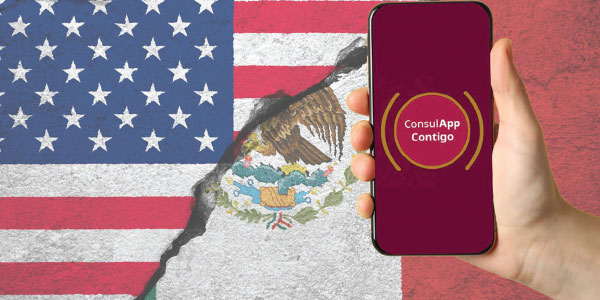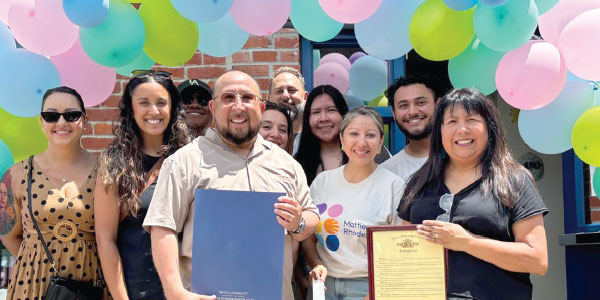
Recientemente, alrededor de 300 estudiantes de la primaria Bertram Caruthers en Kansas City, Kansas, salieron a las calles en protesta.
Ellos lo hicieron para demostrar su solidaridad, no solamente hacia el fallecido líder laboral César Chávez y su lucha por los derechos de los trabajadores migrantes del campo, sino también por los derechos de toda la gente a que sea tratada de manera justa y con dignidad. Esto fue parte de una lección que la maestra de tercer grado Lisa Young ha enseñado por 10 años. Ella dijo que las contribuciones de Chávez a los derechos civiles son áreas productivas de estudio para que los alumnos obtengan el entendimiento moral que pone en peligro una comprensión de la necesidad de justicia.
Al igual que Chávez marchó por 340 millas para protestar por la gente privada de sus derechos, sus estudiantes y otros alumnos de los grados kínder al quinto protestaron por la justicia. Aunque el asunto es central para la historia de los derechos civiles latinos, Young dijo que la historia tiene un llamado que sobrepasa el origen étnico.
“En el nivel básico, los niños entienden que a (los trabajadores del campo) no los estaban tratando justamente. No se trata de escoger a los niños, ellos realmente lo ven en su totalidad”.
La maestra comentó que enseñó la lección durante su primer año para un grupo predominantemente afroamericano, un grupo que inmediatamente entendió y apreció por qué se realizó la protesta y por qué la historia es importante. El padre de un estudiante salió a protestar con ella el primer año; y recuerda que tuvo unos 35 alumnos en la manifestación.
Este año, las cámaras de noticias se hicieron presentes para observar a los estudiantes entonando y ondeando carteles aliándose con Chávez. Ella refirió que la gente salió de sus casas y la protesta atrajo un público.
Young agregó que siente que lo que principalmente obtienes de la lección es la decisión de Chávez para ejercer presión por sus demandas sin usar fuerza física, una decisión que se mantuvo a medida que su movimiento estaba obteniendo una respuesta violenta.
“(Chávez) nunca trató de defenderse. Los niños siendo niños, están tan acostumbrados a gritar, a pelear”, refirió. “Saber que alguien más lo hizo de manera diferente, creo que empieza a plantar allí una semilla”.
Este es un punto que Young volverá a tratar cuando su grupo aprenda sobre el reverendo Martin Luther King Jr.
“Espero que vean que algunas cosas pueden cambiarse”, expresó.
[divider]
Students protest to learn about social justice
By Jesus Lopez-Gomez
Recently, around 300 students from Bertram Caruthers Elementary in Kansas City, Kan., took to the streets in protest.
They did so to show their solidarity not only with the late labor leader Cesar Chavez and his fight for migrant farm workers’ rights, but also for the rights of all people to be treated fairly and with dignity. It was part of a lesson third-grade teacher Lisa Young has taught for 10 years. Young said Chavez’s contributions to civil rights are fruitful areas of study for pupils to get a moral understanding that endangers an understanding of the necessity of justice.
Just as Chavez marched 340 miles to protest for the disenfranchised, Young’s students and various other students from grades K-5 marched for fairness. Although the issue is central to Latino civil rights history, Young said the story has an appeal that transcends ethnicity.
“On a basic level, the kids understand that (the farm workers) weren’t being treated fairly,” she said. “It’s not about trying to single out kids. And they really see it as a whole.”
Young said she taught the lesson during her first year to a predominantly African American class – a group that immediately understood and appreciated why the march took place and why history is important. A student’s father marched with her the first year, she recalled, and she had around 35 students demonstrating.
This year, news cameras showed up to watch the students chanting and waving signs allying themselves with Chavez. She said the protest drew people from their homes and attracted an audience.
Young said she feels the biggest takeaway from the lesson is probably Chavez’s decision to push for his demands without physical force, a decision that held as his movement was eliciting a violent response.
“(Chavez) never tried to fight back. Kids being kids, they’re so used to yelling, fighting back,” she said. “Knowing that someone else had done it differently, I do think it starts to plant the seed there.”
It’s a point Young will revisit when her class learns about Rev. Martin Luther King Jr.
“I’m hoping they see that some things can be changed,” she said.










